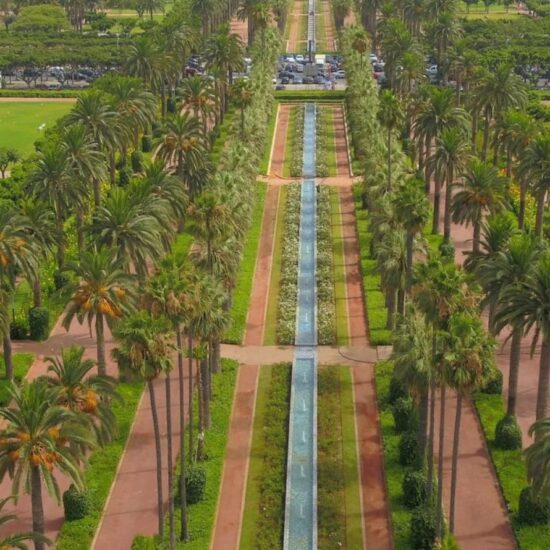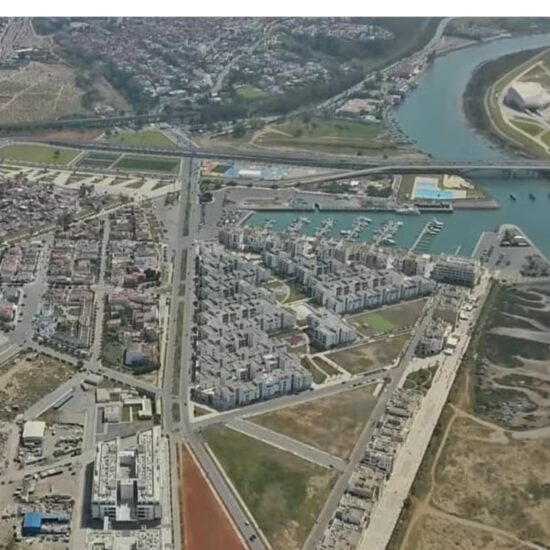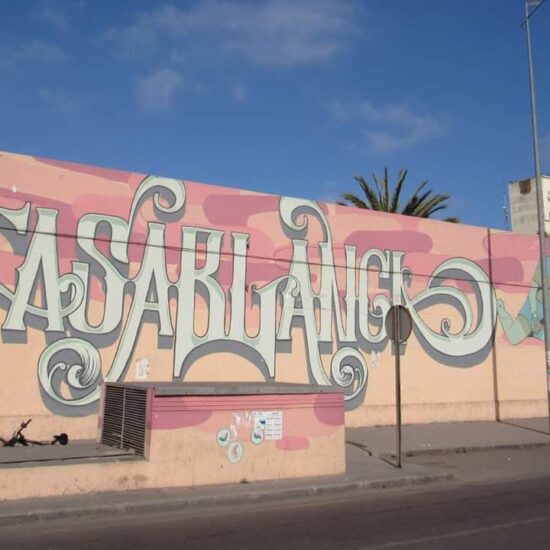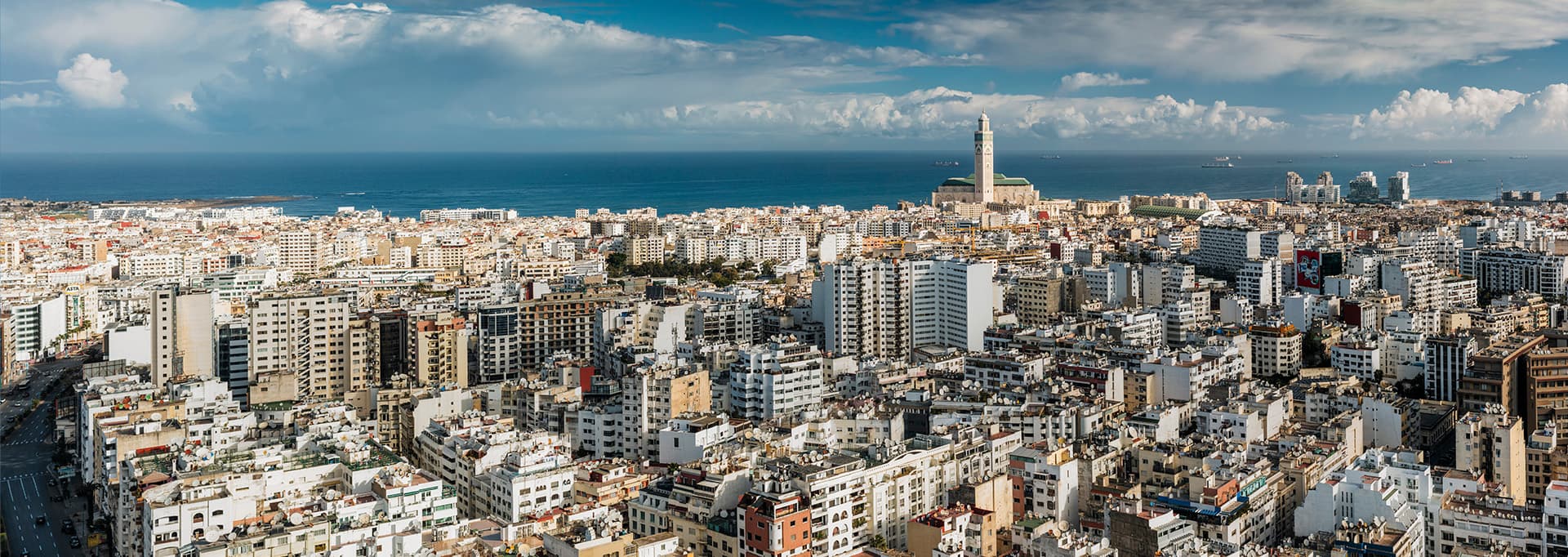The Old Mellah & the Tnaker
Let's go together to discover the Old Medina of Casablanca, and more particularly the Old Mellah and Tnaker.
At the origin of the modern city of Casablanca, there is the Old Medina. It is from this historic heart that the economic capital of Morocco developed. From the 10th century, the city was indicated on maps as a small port city in the province of Tamesna, open to foreign trade with Spain, Portugal and Italy. It then bore the Berber name of Anfa, which refers to a "small hill" and was administered by the powerful heretic tribe of the Berghwatas. In 1068, the Almoravid conqueror Youssef Ben Tachfine besieged and destroyed the city.
Three centuries later, in 1468, the city was attacked and destroyed again, this time by the Portuguese, in retaliation for the danger that local pirates posed to their merchant ships. Casablanca then suffered a long eclipse of three centuries. It was not until the reign of Alaouite Sultan Sidi Mohammed Ben Abdellah (1747-1789) so that the ruined city could be rebuilt and fortified.
He equipped it with ramparts, a military bastion (the Sqala), a large mosque (Jemaa Kebir), schools, ovens and hammams. The Sultan then wanted to provide the country with a large modern port and, for this, opened a customs office in Casablanca and granted two Spanish houses a monopoly on trade in the region. Between the 18th and the end of the 19th century, the port of Casablanca became Morocco's leading export port for wool, cereals and tea. It was also under the reign of Sidi Mohammed Ben Abdellah that the city began to be known as "Dar Al Beida".
The city is in full swing and then massively attracted a population originating from all regions of Morocco, but also from southern Europe. From 700 inhabitants in 1836, it rose to 25,000 in 1907.
Trade intensity and population growth forced Sultan Moulay Hassan I (1836-1894) to implement a new spatial organization in the Medina. A real start to urban planning. The Medina was then divided into three distinct districts:
- First of all, the Medina, to the east and northeast of the city, along the coast. This district is home to some of the oldest valuable buildings in the city.
- Then, the Mellah or "Jewish quarter" located on the opposite side of the shore, to the south and southwest of the city. It was partly destroyed in the 1930s during the development of the current United Nations Square.
- Finally, to the west, a gigantic piece of land accessible by the Bab Marrakech gate. It was quickly occupied by the population resulting from the rural exodus, it is called the Tnaker.
Together, let's go with Blog, discovering the old Mellah and Tnaker district. Let's go!
-
InclusThe Old Mellah & the Tnaker
-
Pas inclusNatureMovie theaterIndustryUrban planningHistoryArchitectureSpirituality / ReligionSportHobbies
Departure
- Introduction to the Old Medina of Casablanca, Mellah and Tnaker side
- La Magana or Clock Tower
Circuit
- Shops under the Arcades of Boulevard d'Anfa
- Bab Kebir
- Jemaa Souk Market
- Jemaa Souk Mosque
- Chakib Arsalane Street
- Derb Gnawa
- The Old Cherifian Post Offices & the Tissue Kissariat
- The Mausoleum of Sidi Mbarek Regragui
- Jemaa Chleuh
- Bab Marrakech
- The Jewish Cemetery of the Medina
- Tahar Alaoui Street
Arrival
- Souk Namoudaji, the Senegalese Market
Donnez votre avis
DETAILS
Duration : 3 hours
Distance : 1 km
Shift : on foot
Language : in French, in English, in Arabic





![[:fr]CitizOn CasaPocket - Visite de l'ancienne médina de Casablanca Maroc[:]](https://citiz-on.com/wp-content/uploads/2023/04/1-2-550x550.jpg)
![[:fr]CitizOn CasaPocket - Visite de l'ancienne médina de Casablanca Maroc[:]](https://citiz-on.com/wp-content/uploads/2023/04/1-copie-2-550x550.jpg)
![[:fr]CitizOn CasaPocket - Visite de l'ancienne médina de Casablanca Maroc[:]](https://citiz-on.com/wp-content/uploads/2023/04/2-copie-550x550.jpg)
![[:fr]CitizOn CasaPocket - Visite de l'ancienne médina de Casablanca Maroc[:]](https://citiz-on.com/wp-content/uploads/2023/04/1-2-scaled.jpg)
![[:fr]CitizOn CasaPocket - Visite de l'ancienne médina de Casablanca Maroc[:]](https://citiz-on.com/wp-content/uploads/2023/04/1-copie-2-scaled.jpg)
![[:fr]CitizOn CasaPocket - Visite de l'ancienne médina de Casablanca Maroc[:]](https://citiz-on.com/wp-content/uploads/2023/04/2-copie-scaled.jpg)